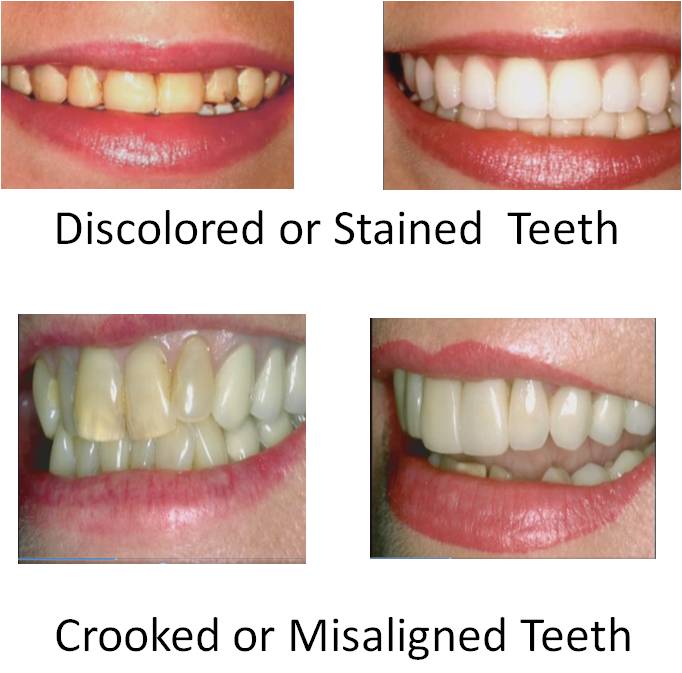8/8/2011 12:52:00 AM by Dr. Smile Dental Group
Whether we like it or not, dental appointments are a necessary part of life.
I don't know anyone who enjoys a visit to the dentist. In fact, everyone I know dreads the thought of going and why not? We’re in pain when we go, uncomfortable during the procedure and sore afterwards. But what choice is there?
I find that understanding the specifics of a medical or dental procedure helps me manage the anxiety. Nothing is scarier to me than the unknown - knowledge is power (or at least a mild sedative).
With that thought in mind, here are explanations of common dental treatments and options. I hope this information helps you during your next grudging appointment to your dentist.
 First, a quick dental anatomy lesson: Teeth are composed of four components - 1. Enamel, the outer surface of the tooth; 2. Dentin, the inner layer of the tooth; 3. Pulp, the living tooth tissue; and 4. the root canal. The portion of the tooth positioned above the gum line is called the crown while the part below the gum is called the root.
First, a quick dental anatomy lesson: Teeth are composed of four components - 1. Enamel, the outer surface of the tooth; 2. Dentin, the inner layer of the tooth; 3. Pulp, the living tooth tissue; and 4. the root canal. The portion of the tooth positioned above the gum line is called the crown while the part below the gum is called the root.
Cavities:
Cavities are caused by tooth decay. This can be any degree of decay ranging from mild decay affecting only the enamel to severe decay penetrating the pulp and compromising the tooth structure.
Decay is caused by sugar and starches (carbohydrates) in food being left on teeth and combining with oral bacteria and saliva. This combination forms plaque which adheres to teeth. The acid in plaque eats (pun not intended) into teeth, causing damage.
This is why you should floss and brush after every meal. If brushing is not possible, studies have shown that chewing sugarless gum after a meal reduces the accumulation of plaque between brushing.
If you are suffering from tooth sensitivity - hot or cold, sweet or sour food and drink causing pain - or just a constant toothache, you may have a cavity. If so, you will need to have the cavity filled.
Fillings:
Before any type of filling can be placed into the damaged area of the tooth, all decay must be completely removed. With today's technological advancements, drilling may not be necessary. Dental clinics are utilizing lasers and Air-Abrasion for pain-free treatments. Be sure to ask if this is an option for your particular dental condition.
Air Abrasion:
This process is used to clean and prepare teeth. Air Abrasion has no vibration, minimal heat generation, and allows maximum tooth strength with minimal tooth reduction. It’s a quick, quiet and comfortable procedure.
Silver Fillings:
.jpg) Silver Fillings, also called Amalgam Fillings, used to be the only choice and they are still used today. However, silver fillings are noticeable, unattractive and do not help restore strength to damaged teeth.
Silver Fillings, also called Amalgam Fillings, used to be the only choice and they are still used today. However, silver fillings are noticeable, unattractive and do not help restore strength to damaged teeth.
They also wear down, crack and will need repair or replacement because the nerves will become exposed and painful. Silver fillings will cost you more time and money in the long run due to the necessity of replacing them.
Resin Fillings:
Resin fillings, also called Composite Fillings, are a tooth colored resin compound used to fill teeth. Composite fillings restore strength and wear like natural teeth. They contain fluoride to help prevent further decay.
Resin fillings cost a little more initially, but last longer than silver fillings. Because composite fillings last longer, they are a great option for adults or children. They also look natural – giving you a terrific smile!
Root Canal Therapy:
Sometimes deep cavities or a blow to the tooth cause bacteria to get into the pulp chamber. This causes the tooth or nerve to become infected.
Root Canal Therapy is the procedure to remove the infected tissue and replace it with a filling material. A crown is then bonded onto the tooth to repair your smile.
Usually, the only other option is the extract (remove) the tooth. While this may be fine if the tooth is not noticeable, root canal therapy allows you to keep the tooth instead of having a tooth-shaped hole in your smile.
Several dental offices can perform a full root canal within one visit, making this procedure more convenient and relieving your pain more quickly.
Apicoectomy:
If the Root Canal Therapy does not completely heal the infected tooth, a minor surgical procedure called an Apicoectomy may be performed.
To stop infection, your dentist makes a small incision in the gums, removes the infected material and seals the tip of the root.
This may not be as bad as it sounds. Remember, Novocain is your right as an American.
Equilibration:
 Sometimes it's not pain that causes us to brave the dental chair. If you are not comfortable with your smile, it can affect your self-esteem (see article "Are Dental Problems Affecting Your Self-Esteem?").
Sometimes it's not pain that causes us to brave the dental chair. If you are not comfortable with your smile, it can affect your self-esteem (see article "Are Dental Problems Affecting Your Self-Esteem?").
Equilibration is the procedure to adjust a person’s bite (Occlusion) by removing small layers of chewing surface until teeth come together comfortably and evenly.
This will not only cause some improvement in your smile, it will relieve discomfort to the jaw while chewing.
If you have any further questions or need dental care,call Dr. Smile Dentist Group at 310-548-8128. We accept most dental PPO insurance plans and offer an affordable payment plan to those who qualify.